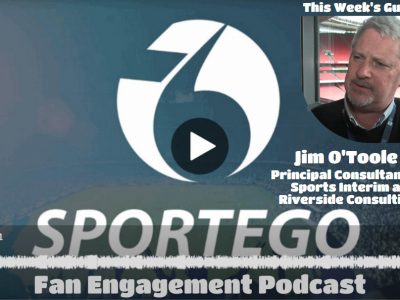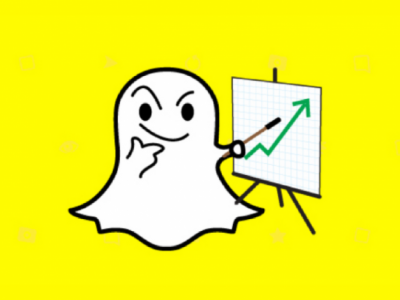
On the 5th of July, we are taking our Fan Engagement Conference (FEC) on the road. Sportego is teaming up with Digital Sport to bring the conference to the UK, or more specifically to the fantastic AMEX stadium, home to Premier League new boys Brighton!
As part of our build up to FECBrighton, Mario Leo, General Manager of Result Sports sat down with Sportego COO Colm O’Mealoid and gave great insight on his thoughts about social media in sport, having worked with the likes of Barcelona, Juventus and Manchester City on their social strategy. This interview was first published in Digital Sport, and we think you’ll agree that it provides great insight. We hope to see you in Brighton on the 5th July…
Now that social media are now over ten years old, would you say that sports teams are deriving the full benefits possible or are they only scratching the surface?
It isn’t possible to give a general answer to that question as it varies from team to team. A team’s success on social media depends on resources available to the organisation, the quality of their strategy and whether they are achieving their objectives. A number of clubs have started to monetise digital media, while others stick using them as a news flow and a tool for providing updates. There are certain, innovative clubs who are deriving the full benefits available by delivering digital news, digital content and monetizing their presence, while others don’t extend its usage beyond a news source.
On that note, how would you advise sports teams on how to monetise their social media presence?
Firstly, it is important to identify the platforms that are monetisable. In reality, there are only 3 that can be monetised: Facebook, Instagram and YouTube. The flow and wave of messages on Twitter makes it very challenging to monetise.
Secondly, teams should identify assets of clubs which are unique to them and that they can deliver before any other medium, such as the starting lineups, transfer announcements and behind-the-scenes content. These assets can be monetised via platform sponsorship, content sponsorship and product placement.
More and more, brands are seeking to “emotionalise” their products or brands, meaning they want to link their brand to a particular emotion or feeling. For example, if a team had a partnership with a pizza company, say Pizza Hut, fans could receive a 10% discount on pizza deliveries when the team win. This ties the emotion of winning to the brand name, which is what brands are looking for. It’s about creating the right fit for the brand.
Sticking with monetization - Do you think that social will become more of an e-commerce channel in the future whereby sales are made directly from the platform?
Early indications show that this could be the case but the approach is fragmented at the moment. Innovative clubs like Man City, Man Utd, Barcelona, FC Bayern and Juventus are leading the way and using social media as sales channels, but there is no one clear strategy in this area. Teams should first define the assets they want to monetise and then ensure they are using the right platform to distribute the asset. As mentioned before, Facebook, Instagram and YouTube could become commerce channels but not with Twitter.
When social media began, they were mainly consumed on desktop computers. Now, they are mainly consumed on mobile. Have teams changed their approach to account for this shift?
Yes, they have. When you see the evolution of Instagram, you can see the move towards mobile first consumption. For the Premier League, Instagram was the largest growing social platform for the past season. The 20 teams and the Premier League itself had more than 16m fans on Instagram, whereas Facebook and Twitter had around 15m. Instagram is almost all mobile and teams have realised that this the favoured medium for content consumption.
The mobile offerings of clubs are still strongly app-driven for a number of reasons – content can be imbedded easier and selling-in factors like buy-in options are more effective. Personally, I believe clubs are hesitant to use apps as a sales funnel as clubs don’t like the commission that Google and Apple take on in-app purchases.
As we know, sports fans are very passionate. This can have advantages and disadvantages when it comes to social media management. Do you think social media managers in sport have a tougher job than other industries? Or should they consider themselves lucky to have such an engaged audience?
Again, it’s a mixture. You can’t switch social media off and therefore sports teams need to be online around the clock to deliver updates to fans as they happen. This means that dedication is at a much higher level than it would be with a brand or agency.
Sometimes the sports social media manager is undervalued because the potential and direct results from social media have not been fully detected within the organization. It may be the case that certain departments within teams have not fully embraced digital, but when they do, social will become the most important channel for the business.
Because fans want to hear it from the clubs first, social media managers often rush into making a post. This is not necessarily the case in other industries. Any errors will be jumped on by the attentive audience. Fans won’t mind a typo if the message is accurate, but things like a misleading translation or an inaccurate message for example, could be damaging.
If a team told you they were limited on resources and asked which platform they should focus on, what answer would you give?
Today I would focus on Instagram. The flexibility on Instagram, be it with pictures, stories or live video gives it all the ingredients to be the sole engager with the fans. Considering the four core platforms (Facebook, Instagram, Twitter and YouTube), Twitter is the quickest for information due to its chronological flow, but because of its ease of use, Instagram is the best due to its overall app handling. It is the easiest to learn and the easiest to love.
A platform we haven’t mentioned yet is Snapchat. What are your thoughts on this platform? Will it survive in the sports world with Instagram, WhatsApp and Messenger coping its features? Many teams are still unsure of how to best use Snapchat – how would you advise them to do so?
For me, Snapchat is the playground for the 13 to 20-year-old age group. It is the playground because their parents and grandparents use other channels, predominantly Facebook. Facebook has really aged in 10 years because those who were 20 years old in 2008 are now turning 30. They are parents themselves and they talk to their parents who then use the platform. The younger generation, however, want to be alone, away from the older eyes.
In terms of content, it can be difficult as unique, quirky content is required. It is not enough to simply announce the team lineup on Snapchat. This is not what the youngster wants. They want to get deep into the life of the star, that’s why Snapchat player takeovers get the highest engagement.
As to whether it will survive, this is a big challenge. What it does have are some unique features like the Snapchat Spectacles but they will always face an uphill battle in the development race given the resources that Facebook have. It has the potential to survive, but whether it can be monetized is another question. When it comes to app handing – it is not that easy to use. If Snap can make it easier to use, easier to learn, more intuitive, it has the chance to survive. If it continues to be difficult to find info, friends and content which the users want, it will struggle. Right now, Snapchat’s USP is its young audience, but similar to what happened to Facebook, that audience will mature with time and this USP could be lost.
What makes a great hashtag?
That’s a good question. It needs to be fairly short and unique. For the audience/fans, they need to be picked up and engaged by it. It shouldn’t be themed, nor should it be a marketing phrase, it should be something that the audience can identify with.
More and more teams are creating accounts on the Chinese social media sites, (QQ, WeChat, Weibo etc). How would you best advise teams on what approach to take in this market?
The objective here is to tap into the market where the commonly used, “Western World” platforms are forbidden. There is no way of fan or sponsors engagement in China without being on Chinese social media.
China’s decision to put more money into football has encouraged more teams to develop a presence on social media, with most of them focusing on Weibo. In 2012, QQ was the go-to platform for Chinese users, but QQ has seen a constant decrease since then, with most users moving to WeChat, the WhatsApp counterpart (as it happens, owned by the same company, Tencent). The majority of European clubs use Weibo, as Weibo offers a lot of support and it focuses on sport.
In terms of the difference in the audience, they are generally not aware of the club’s history and traditions, but they are keen to learn. They are also more tempted by sporting success. The more visible a team is on TV, the higher potential there is to dominate on social media.
In terms of strategy, it is important to remember that football is not the number 1 sport in the country, although it is getting there rapidly. To be very successful, teams must get involved in the Chinese community, be it with youth programs or corporate social responsibility initiatives. It is not enough to provide day-to-day updates on team activities. Users will gravitate to teams that are connected to China in the online and offline worlds.
Moving on to content strategy, can you tell us three things that most teams are not doing now that they will all be doing in the future social?
One thing for sure is monetizing the social media presence. Looking at innovative clubs, obviously they have full capacity stadiums, they have a good idea of their media rights income and they have fully fledged global merchandising strategy in place. They therefore sought new opportunities to create additional revenue and therefore had to innovate with social media. To do this, they created new social media assets and made digital the go-to place for consumption of the brand.
Secondly, we will see more videos, and more videos produced in-house by clubs. At the moment, only a few clubs have their own in-house production teams.
Finally, teams will seek to differentiate, to define what makes their club special. Teams will go beyond the standard communication and the values and traditions as a club will be constant. All communications should be a digital image-building and a brand-building exercise.
Mario will be speaking at #FECBrighton on 5 July, get your tickets at www.feckk.ie
Some of the most effective social media management comes from teams reacting very quickly to real-time events. Is it possible to develop a strategy to ensure the team are best-placed to create that topical post very quickly?
This comes back to what I presented at the Sportego FEC conference in Kilkenny last March – the earlier the social media guys can get involved, the better. If you are only reactive, you could get a negative reaction. if you are more involved in planning, you can be better prepared for future events. For example, if the chief scout recommends players them to sporting director, the marketing director should be involved and should send the player to the digital guys to be evaluated, This will give a massive advantage when it comes to reacting to an event in the future involving that player.
This doesn’t apply just to the social media department however. It is common that many departments such as ticketing, marketing and communications don’t engage with the sporting department, leaving the sporting department very isolated. If you build links into the sporting department, you can plan much better and be better prepared for the future.
Fan-generated content is an area that more and more teams are focusing on – how can teams best encourage fans to create great content?
The in-stadium experience is key for the fans. Just like if you go to Amazon and you want to buy a book – you look at the reviews. It’s the same for user generate content. It can have a very positive effect on the image and on a stadium experience. But sometimes the lack of Wifi or phone reception is poor. So, to encourage more fan-generated content, the technology experience needs to be stron and we have seen this as more and more teams invest in strong technology.
A commercially-minded employee may question the value of fan-generated content as it doesn’t bring the direct value of team-lead or sponsor-lead content. However, it is very important for fans, they want to be individuals. Also, because fans love a unique fan experience, they don’t object to the use of their images, in fact, they love their content being shared by their team.
At Sportego, we’re a sports analysis company, so it would be remiss of us not to ask a question on analytics. What do you consider as the most important metrics when analyzing social media activity of teams? Do you look at different metrics for different platforms?
Unfortunately, not every platform provides the same metrics. The ideal scenario would be to be able to make apples to apples comparison to see what platform performs best, which user is engaged and where is he engaged. Is she/he on multiple platforms, is she/he in my CRM database. Teams would like to have a holistic analytical view of social media performance, to see what works best on each platform. Analytics are crucial in this respect. Most analytics metrics are based on engagement, which is the correct approach. They look at how many people are reached, how many engaged and how many are engaging on multiple pieces of content.
The top platforms, with the exception of Twitter, deliver sophisticated analytical insights. Twitter’s analytical tools are very superficial. It shows reach and retweets – but it is impossible to identify who did what with the content.
Thanks Mario - we’re looking forward to seeing and hearing more from you at #FECBrighton!
Me too – I’m looking forward to some great discussions on fan engagement!
Buy your ticket via Eventbrite or via our site by this Friday to avail of the Early Bird price!





